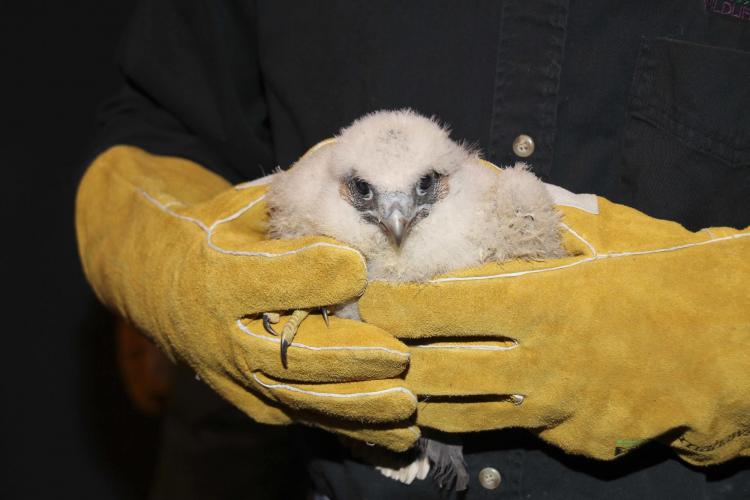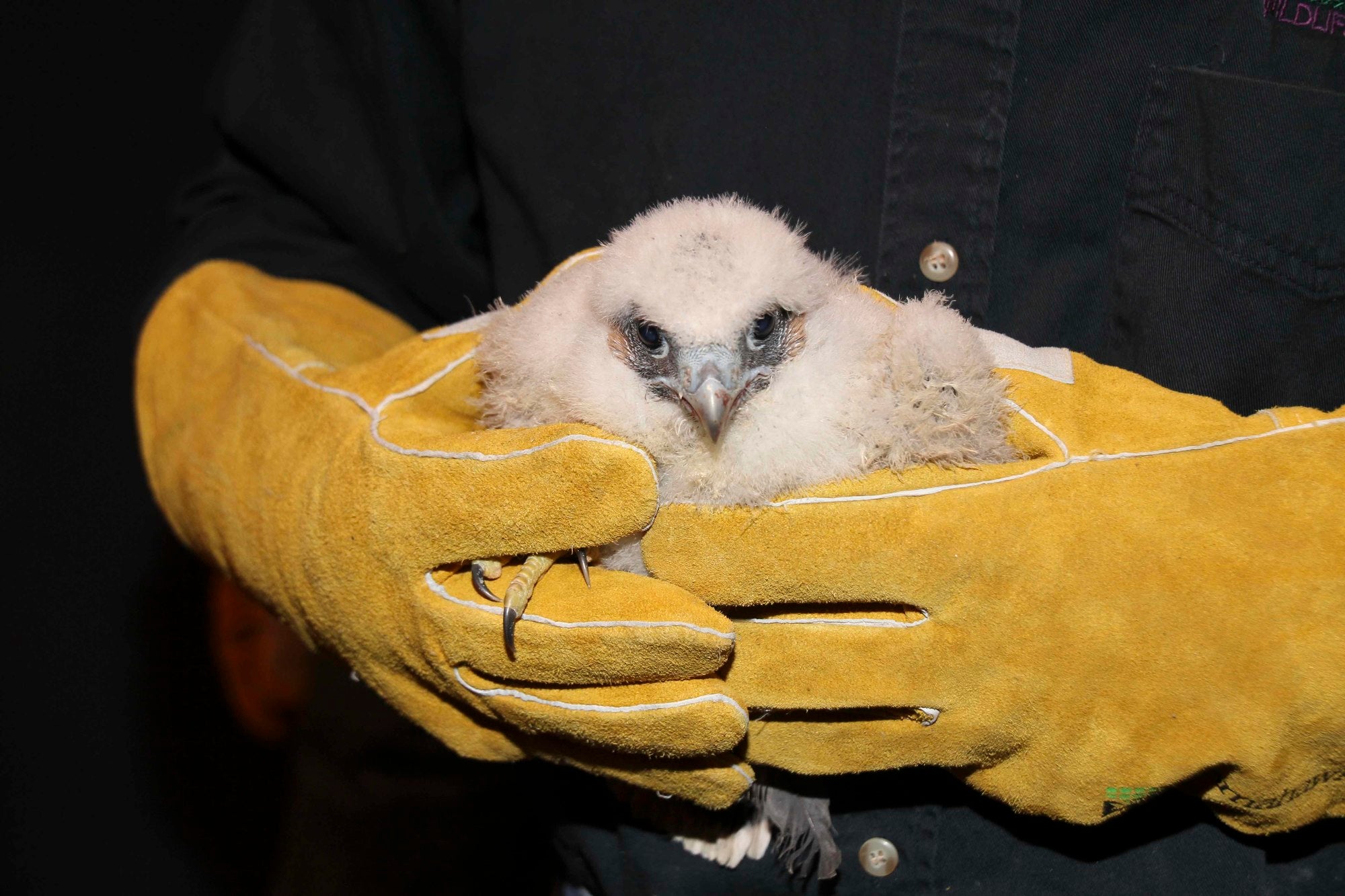
Xplor reconnects kids to nature and helps them find adventure in their own backyard. Free to residents of Missouri.


































Stay in Touch with MDC news, newsletters, events, and manage your subscription

Xplor reconnects kids to nature and helps them find adventure in their own backyard. Free to residents of Missouri.

A monthly publication about conservation in Missouri. Started in 1938, the printed magazine is free to residents of Missouri.






Kansas City, Mo. – Peregrine falcons continue to thrive in the Kansas City area, and a new nest at Thomas Hill Reservoir in Randolph County may be a forerunner of future nests in rural areas. Missouri Department of Conservation (MDC) biologists recently worked with falcon program partners to place identification bands on falcons born this spring. The falcons, endangered in Missouri, are the result of a conservation program to develop populations by releasing birds and placing nest boxes in urban settings. Tall buildings or smokestacks mimic cliffs where falcons historically nested.
Falcon pairs at nest sites in Kansas City and St. Louis are consistently producing young falcons each spring, said Joe DeBold, MDC urban wildlife biologist. In the Kansas City metro this spring, 10 young were hatched at three nests on KCP&L power plant smokestacks. A nest at American Century Investments at the County Club Plaza produced four young. All nest sites are on towers or skyscraper ledges, places the high-flying falcons prefer. The falcons prey on pigeons and other birds for food.
MDC first released peregrine falcons in downtown Kansas City in 1991. A pair eventually produced young at a nest at that release site in 1997. Since then, numbers of nests have gradually grown. Nest boxes are in place at other sites in Missouri and biologists hope new falcon pairs will utilize them in the coming years.
“The new nest at Thomas Hill gives us hope that we’re going to start recruiting more nesting pairs in Missouri,” DeBold said.
On May 19, MDC biologists banded falcons at some urban Kansas City sites along with staff from the U.S. Department of Agriculture Wildlife Services, a partner in the program. The bands help biologist track falcon migrations and nesting.
Partners KCP&L and American Century Investments this spring provided cameras for online viewing of falcon nests. But look quick, as falcons grow fast and DeBold expects the birds that hatched in late April to fledge, or start flying, in June.
The young can still be viewed online at http://bit.ly/1Tvfozx or at http://bit.ly/1YSqGzk.
For more information on falcons or other watchable wildlife, visit http://mdc.mo.gov.